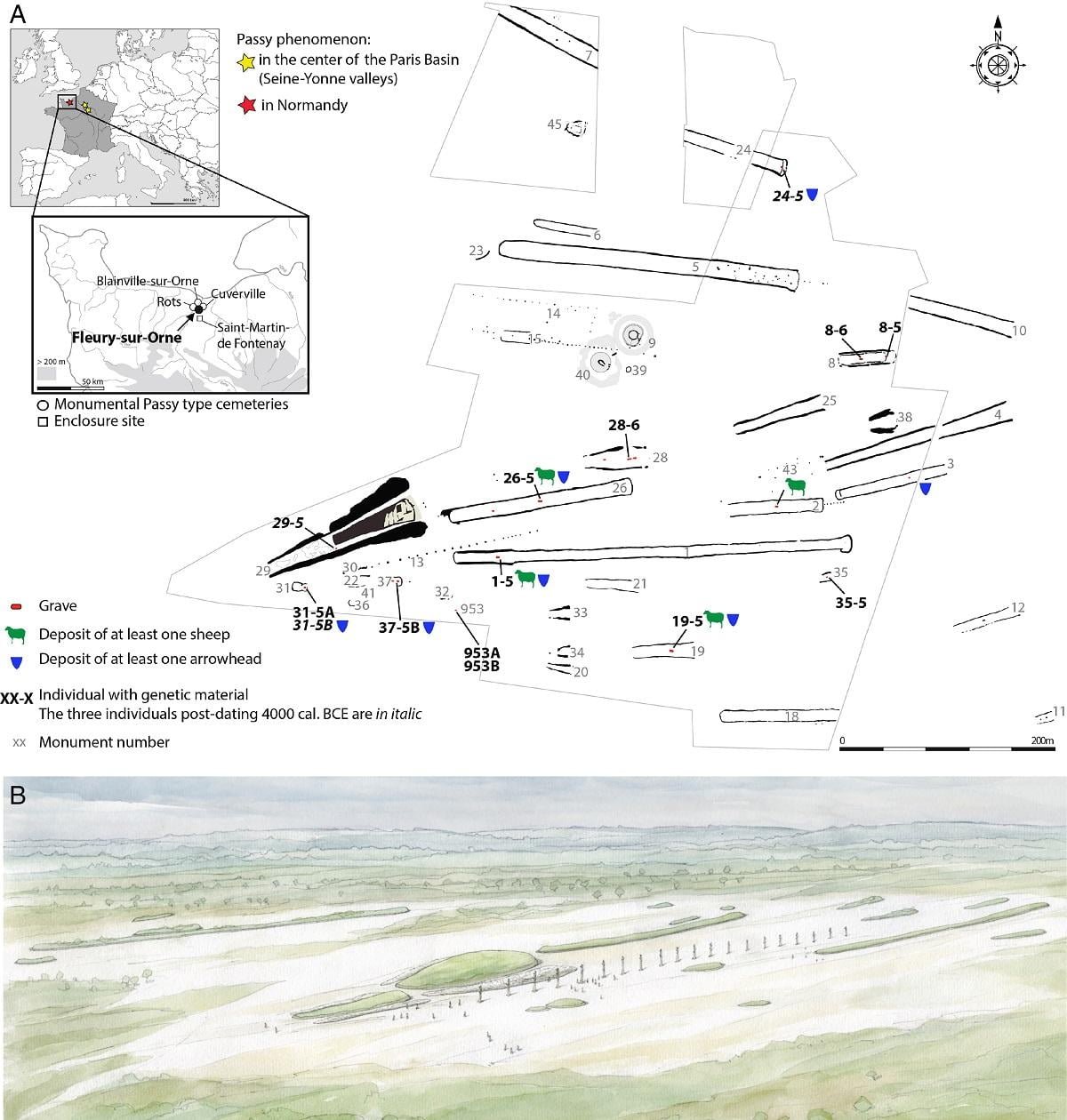A recent archaeological study has shed light on the social organization and burial practices of the Neolithic period in Normandy, France. The study focuses on the Fleury-sur-Orne site, dating back to the fifth millennium BCE, and is renowned for its monumental megalithic structures built in honor of selected individuals.
 DNA Strand. CC0 Public Domain
DNA Strand. CC0 Public Domain
The Fleury-sur-Orne site consists of 32 monuments of varying sizes, containing the remains of 19 Neolithic individuals. Researchers generated genome-wide data from 14 of these individuals, revealing intriguing insights into the social structure and genetic relationships within this ancient community.
The analysis of ancient DNA from this site aligns with previous research suggesting that Neolithic societies in Europe had patrilineal social systems. In such systems, individuals belonged to the biological group of their fathers. This approach provides a lens through which to explore the broader aspects of societal organization.
The Fleury-sur-Orne cemetery is considered one of the earliest examples of monumental funerary architecture in Europe. It predates the more well-known megalithic structures found along the Atlantic coast. Established in the second quarter of the fifth millennium BCE, the site consists of earthen long barrows, some reaching up to 300 meters in length. These structures belong to the Cerny culture, originating in the Paris Basin around 4,700 BCE.
 Site description. (A) Location and map of Fleury-sur-Orne in northwestern France. (B) Artistic impression of the Fleury-sur-Orne monuments and surrounding landscape. Reproduced with permission from Laurent Juhel.
Site description. (A) Location and map of Fleury-sur-Orne in northwestern France. (B) Artistic impression of the Fleury-sur-Orne monuments and surrounding landscape. Reproduced with permission from Laurent Juhel.
These monumental cemeteries were likely built to honor high-status individuals, and previous research has identified certain individuals as “hunters” based on their burial goods, which included arrows, quivers, and potentially bows. This masculine symbolism characterizes the Cerny culture in the Paris Basin.
The genetic analysis of individuals from the Fleury-sur-Orne cemetery indicates that they fit within the broader genetic diversity of western European Neolithic populations. Intriguingly, the genetic data suggest that a new group arrived after 4,000 BCE.
Further genetic analyses, including the examination of uniparentally inherited markers and the study of long runs of homozygosity, support the idea of a patrilineal society with practices of female exogamy. Notably, two pairs of individuals buried together were identified as father and son, pointing to a male-mediated transmission of sociopolitical authority.
Despite the overall patterns of patrilineal social organization, the Fleury-sur-Orne site reveals some unique aspects. Notably, the presence of a single female buried with an arrowhead challenges the notion of a strictly male-dominated burial tradition.
Moreover, the absence of subadults and burials in the lateral ditches at Fleury-sur-Orne sets it apart from other Cerny cemeteries in the Paris Basin. These differences raise questions about the burial practices within the Pᴀssy phenomenon and the social status of children within this context.
The Fleury-sur-Orne site offers valuable insights into the social structure, genetic relationships, and burial practices of Neolithic societies in Normandy. It also presents unique complexities that challenge some ᴀssumptions about the roles of gender and age in burial traditions.
More information: Maïté Rivollat et al, (2022). Ancient DNA gives new insights into a Norman Neolithic monumental cemetery dedicated to male elites, Proceedings of the National Academy of Sciences. 119 (18) e2120786119. DOI: 10.1073/pnas.2120786119





